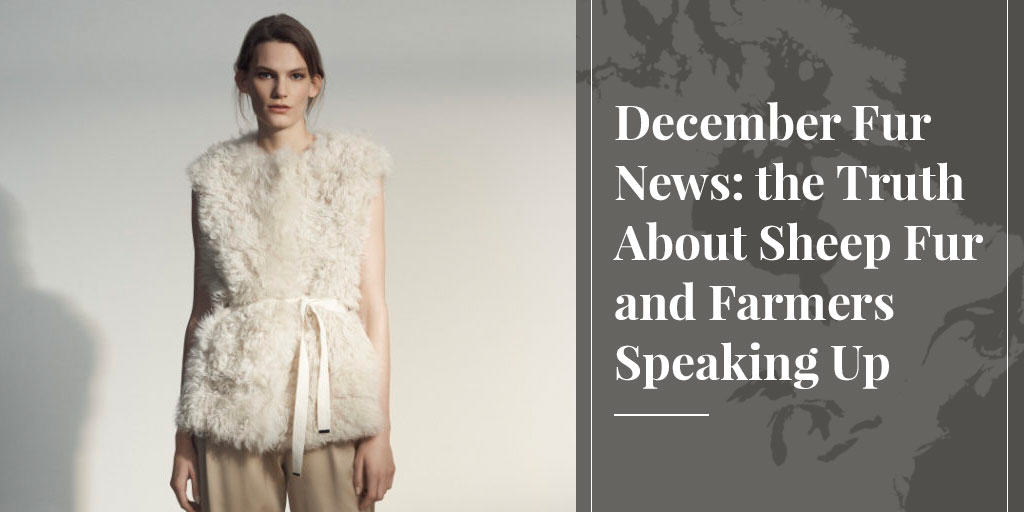
It’s our first news roundup of 2018 so let’s review the fur headlines from December, including stories about sheep fur, farmers speaking up, and activists up to no good.
Let’s start with fashion. December saw the showing of the Pre-Fall 2018 collections, which were jam-packed with fur, and proof that Gucci and Michael Kors’ announcements are not a trend that is industry-wide. China has a huge appetite for the luxury material and we are seeing pro-fur stories in the fashion media and in opinion pieces. Whether you are looking for a fur coat, a trapper hat, or fur slides, there’s something for everyone.
But the fashion media aren’t all fur-savvy. A Vogue writer, Emily Farra, thought that sheepskin did not require the animals’ pelts, so we decided to write up a piece about sheep fur. Also known as sheepskin or shearling, sheep fur is not wool, and uses the animals’ skin and hair. Pamela Anderson is one of many people who didn’t realise that sheepskin actually used sheep’s skin, and now she is busy campaigning to get the Kardashians to give up fur. We are sure they will be willing to do it, for an hour or so.

The confusion about sheepskin and sheep fur raises questions about how far removed people are from animal husbandry and how farming works. An article entitled “The gulf between farmers and the people they feed is getting dangerously wide” is an excellent piece exploring this very concept – which has wide repercussions given that we all depend on farming for survival. This young British farmer has been very vocal about the fact that farmers “will always be here.(pictured)” And right she is, farming is such an important industry and animal rights activists have very little understanding of how it works. Speaking of how farming works, we loved this article about how mink farmers are using manure as biofuel.
Positive Trapping Stories
Farmers and trappers don’t often work side by side, but here’s an example of how farmers are trying to preserve a trapping programme, in order to protect their livestock. It’s one of many positive trapping stories from last month, including this feature on a passionate trapper, this article about how it is great to be in the woods, and this piece that breaks down the misconceptions of trapping. On the news front, we were happy to hear that wild fur buyers in Nebraska have been busy, people are waking up to the opportunities of nutria, and the Thompson fur table is doing a bustling trade.

There’s less good news from the protest front lines. This Mother Jones piece exposes how activists are willing to take more risks to push their agendas. From death threats to homesteaders, startling ponies carrying children, declaring war on macaroni and cheese, and threatening hunters, it is clear they will stop at nothing to fight their often ridiculous and hypocritical causes. We highlighted some of this hypocrisy in a recent blog post, where we explained that being anti-fur and anti-pipeline (pictured) is actually quite contradictory. But despite their threats, their inability to distinguish between sheep fur and wool, or their ridiculous hunger strikes, people are beginning to question whether animal rights are unconstitutional, and if veganism is culturally insensitive.

Let’s end December’s roundup with a few stories that caught our attention last month:
The Russians are doing it better – at least when it comes to fur education for kids.
Sea Shepherd have given up fighting the Japanese whalers.
If you are disposing of a Christmas tree this week, pat yourself on the back. Like fur, it is way better to shop real than fake.
And grocery shopping can be more dangerous than you think. (pictured)











Wow, the story about ALF picking on that small homesteading school is really bonkers. Why pick on such a small operation that does seem to treat and slaughter the animals in the most humane way possible?